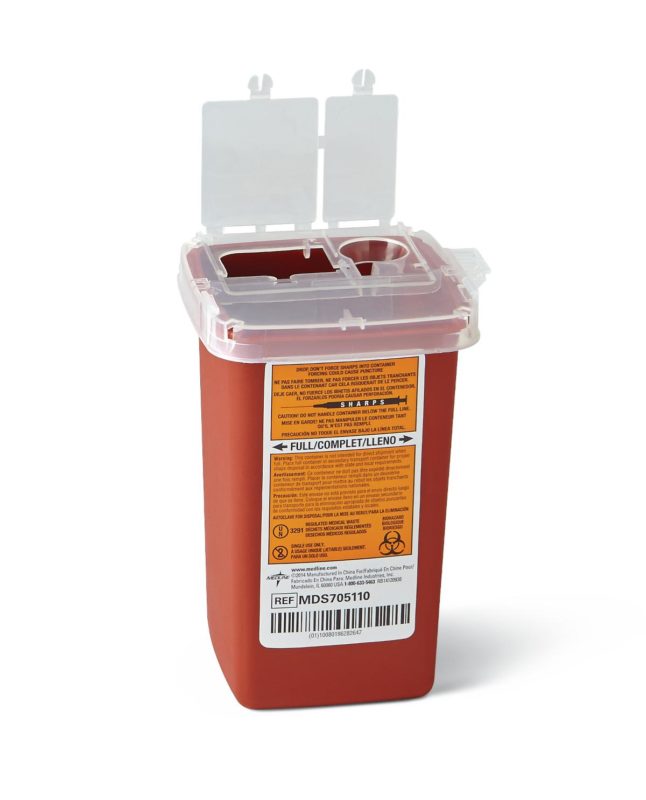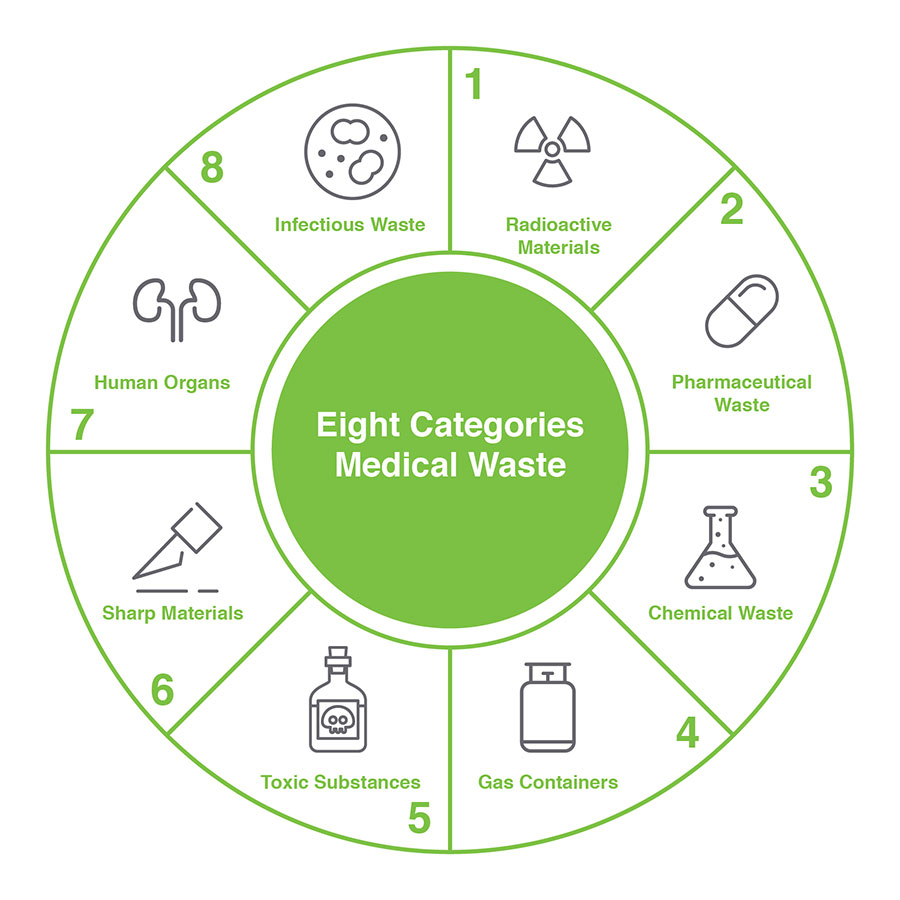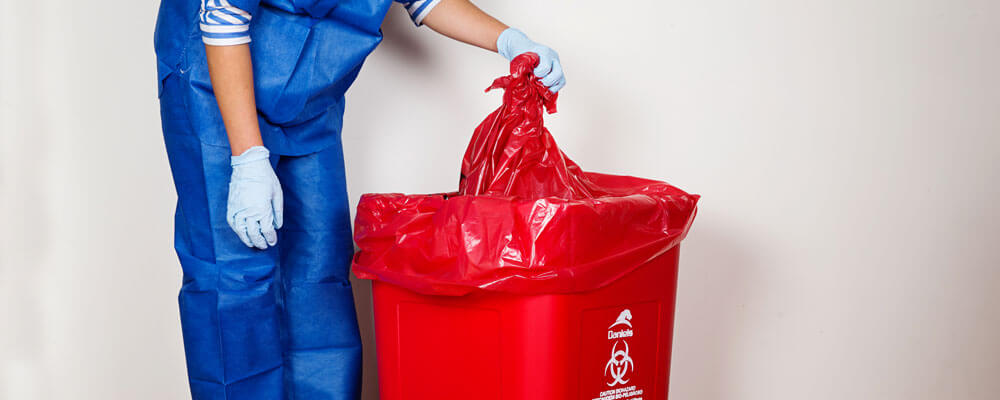Area Treatment: Smooth and Reliable Medical Waste Removal Near Me
Wiki Article
Remain Ahead of Rules: Expert Guidance on Medical Garbage Disposal
In a globe where the health care industry is frequently evolving, it is important for clinical facilities to stay ahead of policies when it comes to the correct disposal of clinical waste. From recognizing the different groups of clinical waste to implementing the appropriate collection and partition techniques, this conversation will give beneficial understandings and workable ideas to aid centers remain in advance of guidelines in the ever-changing landscape of medical waste disposal.Recognizing Medical Waste Categories
Recognizing medical waste categories is important for correct disposal and administration in medical care facilities. Medical waste refers to any type of waste generated by health care tasks that may pose a hazard to public health and wellness or the setting. It is important to classify medical waste accurately to ensure its secure handling, disposal, therapy, and transport.There are several classifications of clinical waste that medical care facilities need to be accustomed to. One of the most usual categories include contagious waste, pathological waste, sharps waste, pharmaceutical waste, and chemical waste. Each group has particular guidelines and regulations for its proper administration and disposal.
Infectious waste consists of materials polluted with blood or various other physical liquids, such as gloves, dress, and laboratory cultures. Pathological waste describes human cells, body organs, or body components that call for special delivery and disposal. Sharps waste includes utilized needles, syringes, and various other sharp items that can cause injury and transfer infections. Pharmaceutical waste makes up ended, extra, or contaminated medications that require cautious handling and disposal. Chemical waste consists of solvents, anti-bacterials, and other chemical compounds utilized in health care facilities.
Remaining Up-To-Date With Regulatory Adjustments
Remaining current with governing adjustments is important for healthcare facilities to ensure compliance and proper management of clinical waste disposal. medical waste removal near me. With policies continuously developing, it is important for medical care centers to stay updated to avoid penalties, penalties, and potential damage to the setting and public health and wellnessTo stay in advance of regulative changes, healthcare facilities must establish a system for monitoring and monitoring updates. This can be done by signing up for regulative newsletters, participating in workshops and conferences, and proactively taking part in industry organizations. Furthermore, centers need to mark a staff member or team in charge of remaining educated and distributing information to appropriate stakeholders.
Routine communication with regulative companies is additionally essential. Health care centers need to develop partnerships with neighborhood, state, and federal companies to guarantee they know any kind of changes in regulations that might influence their waste management methods. This can be done via routine conferences, participation in public remark durations, and proactive interaction with governing agencies.
In addition, health care facilities need to take into consideration partnering with waste monitoring business that concentrate on clinical waste disposal (medical waste disposal services with WasteX). These firms are commonly well-versed in the newest laws and can provide assistance and support to make sure conformity
Executing Appropriate Collection and Partition Approaches
To effectively manage medical waste disposal, health care centers need to develop correct collection and partition approaches based on regulatory guidelines. Implementing these methods guarantees the safe handling and disposal my site of potentially hazardous materials, protects the environment, and minimizes the threat of infections and injuries to health care workers and the general public.
Proper collection and segregation approaches entail making use of assigned containers and identifying systems. Health care facilities should provide plainly labeled containers for various kinds of medical waste, such as sharps, infectious waste, pharmaceutical waste, and non-hazardous waste. These containers should be color-coded and plainly significant to stay clear of medical waste disposal services with WasteX confusion and promote very easy recognition.
Furthermore, health care facilities need to educate their personnel on the appropriate treatments for accumulating and setting apart medical waste. This consists of enlightening them on the different sorts of waste, the ideal containers to utilize, and the significance of following standards and regulations. Normal training sessions and correspondence course should be performed to guarantee that staff participants remain current on finest techniques.
Moreover, health care centers must establish a system for routine collection and disposal of medical waste. This might involve partnering with qualified waste administration firms that focus on clinical garbage disposal. These business will make sure that the collected waste is moved and thrown away in compliance with regulative requirements.
Selecting the Right Disposal Approaches

Incineration is one of the most efficient and typical approaches for getting rid of specific kinds of clinical waste, such as pathological waste and sharps. It includes the controlled combustion of waste at high temperatures, minimizing it to ash. Nonetheless, incineration can launch hazardous contaminants into the air and add to air contamination.

Chemical therapy involves the usage of chemicals to neutralize the waste and disinfect. Microwave therapy makes use of microwave energy to heat and disinfect the waste.
Guaranteeing Compliance Through Paperwork and Training
After very carefully taking into consideration the ideal disposal methods for clinical waste, medical care centers have to make certain conformity with laws and decrease ecological influence by executing efficient paperwork and training procedures. This step is essential in maintaining a safe and lasting environment for both healthcare employees and the basic public.
Medical care employees that take care of clinical waste should receive suitable training on waste segregation, dealing with, and disposal procedures. By offering extensive training, health care facilities can equip their personnel to make educated decisions and minimize the risk of improper waste disposal.
Verdict
To conclude, remaining in advance of laws in clinical garbage disposal is critical for healthcare centers. medical waste removal service. Comprehending the different categories of clinical waste, remaining updated with regulative changes, implementing proper collection and partition techniques, choosing the proper disposal methods, and making sure conformity via paperwork and training are all necessary actions. By complying with these guidelines, medical care organizations can efficiently get rid of and handle of medical waste in a safe and liable wayFrom understanding the various classifications of medical waste to applying the ideal collection and segregation approaches, this discussion will certainly provide valuable understandings and actionable ideas to assist centers stay in advance of policies in the ever-changing landscape of clinical waste disposal. - medical waste disposal services with WasteX
The most common classifications consist of infectious waste, pathological waste, sharps waste, pharmaceutical waste, and chemical waste. Healthcare facilities must give plainly labeled containers for different types of medical waste, such as sharps, contagious waste, pharmaceutical waste, and non-hazardous waste. Health care centers must develop a thorough system to record and track all facets of clinical waste disposal, consisting of kinds of waste created, amounts, and disposal methods used. Healthcare employees that handle medical waste should receive appropriate training on waste segregation, handling, and disposal procedures.
Report this wiki page